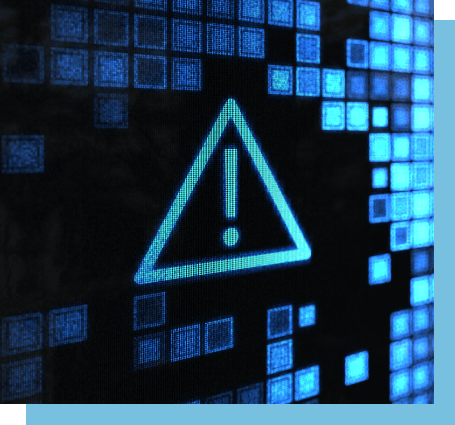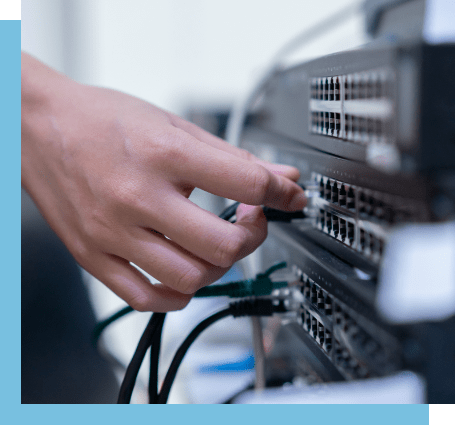Ransomware Recovery Services
Returning your company to operations is our top priority.
How to spot a ransomware attack
Ransomware encrypts your data until you pay to have it decrypted. If prevention fails, early detection is essential. Some warning signs:
- You detect sudden increases in CPU usage and/or file system activity.
- Your files have new extensions and/or will not open.
-
Your applications return error messages and/or refuse to
open. - You see pop ups with warnings, instructions, and contact details.


How to recover from
ransomware – first steps
Quick response will limit the spread so take immediate action if you suspect a breach:
- Disconnect the infected device(s) from the network, but do not shut them down.
- Take all other devices offline or shut them down.
- Secure your backup systems by taking them offline and confirming they are uninfected.
- Inform your IT team immediately and/or contact us – we offer free consultations on suspected cyber attacks.
IT Authorities ransomware recovery process
Returning your company to operations is our top priority. We work with your operations and IT teams to identify the best sequence for bringing your resources back online. Throughout this process, we keep you informed of key details so you can make educated decisions.
ASSESS
Isolate the infection, then determine the threat intelligence, attack vector, and ransomware variant
SECURE
- Close the vulnerability
- Strengthen security with always-on solutions
RECOVER
- Use confirmed-safe backups to restore or refresh
- Mitigate downtime
- Train employees
REPORT
Guidance on where and how to report to law enforcement and/or regulators
An overview of our ransomware service
rapidly increase the IT resources fighting the attack.

Every day, thousands of organizations face ransomware attacks. Criminals have honed this software over thousands of previous attacks to avoid detection and outsmart incident response and business continuity plans.
They map your infrastructure to know which areas you’re locked out of and which to take over next. Typical response efforts (such as restoring your backups) often help the attackers increase the scope of the attack and move across normally isolated parts of your infrastructure.

To address these risks, our systems and network engineers work together with your IT team to systematically assess and isolate the attack until the situation is stabilized. We then determine how the threat defeated your defenses and rapidly plug the gaps. When needed, we will deploy new resources for your users to access their applications and data.
Throughout this process, we evaluate your current threat response and business continuity plans. Our effort is not complete until we’ve provided recommendations to improve the security and resilience of your IT infrastructure.
FAQs
Ransomware is a kind of malware that blocks your ability to access your data, usually by encrypting it. If you pay the ransom, you are (hopefully) given the encryption key to unlock your data. Ransomware will infect one device; if the device is connected to a network, the infection can spread to other devices until it’s identified and isolated. It is extremely difficult to defeat encryption, so ransomware defenses focus on prevention and rapid mitigation.
These are different but strongly connected: Phishing emails are the most common infection method for ransomware. Criminals send an email that appears to be from a legitimate, trusted source. It contains a link or attachment that when clicked installs the ransomware on the recipient’s device.
Every organization is at risk regardless of size, wealth, or industry. High-profile victims make the news, but medium-sized, less well-defended organizations are prime targets. Ransoms are usually low enough to be within the limits of what the victim can pay, but still lucrative for the criminals.
If you have not been attacked, your prime motivations should be prevention and mitigation preparedness. Train your staff in spotting phishing attempts and enforce zero-trust policies on all email links and attachments. Invest in the best backup and recovery solutions you can afford. Establish a rapid-response protocol that isolates infected devices as quickly as possible to contain any infection.
If you have any questions, contact us and we’ll provide free advice on how to strengthen your defences against ransomware.